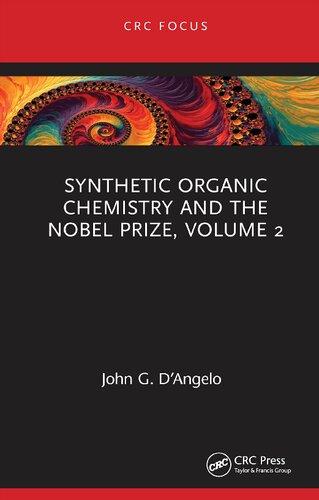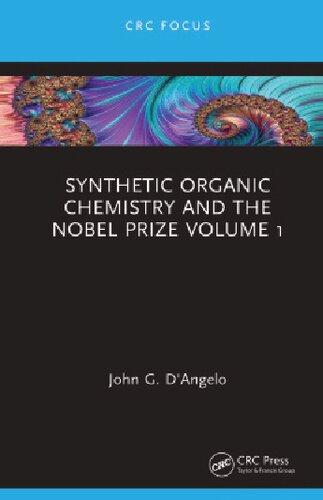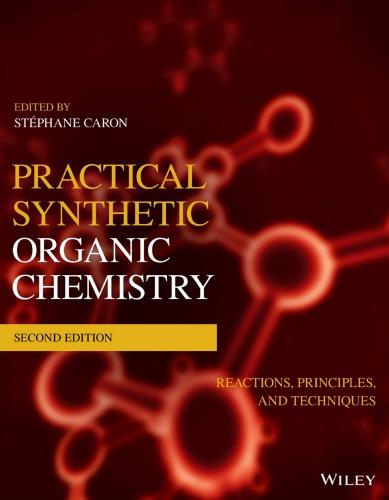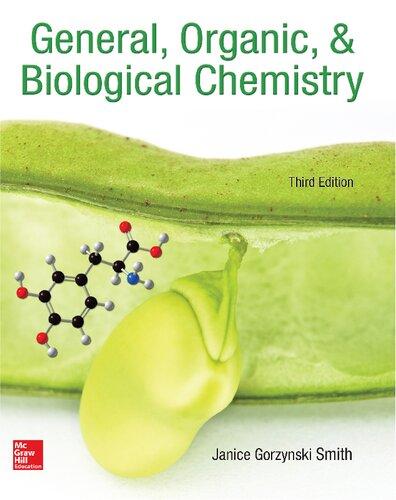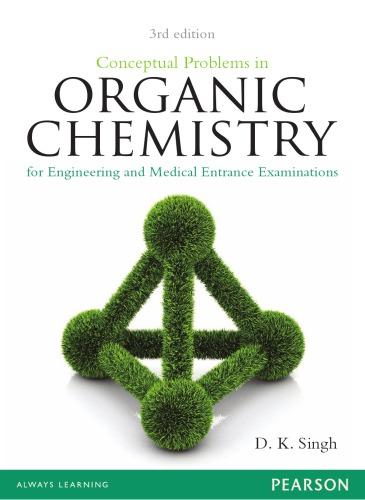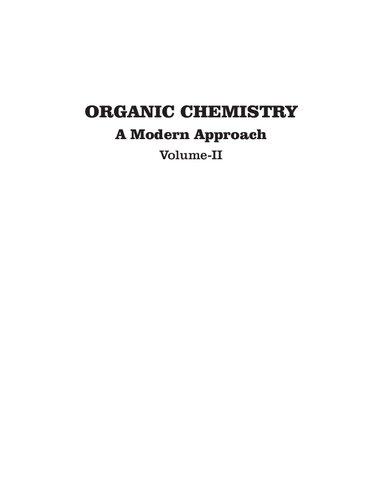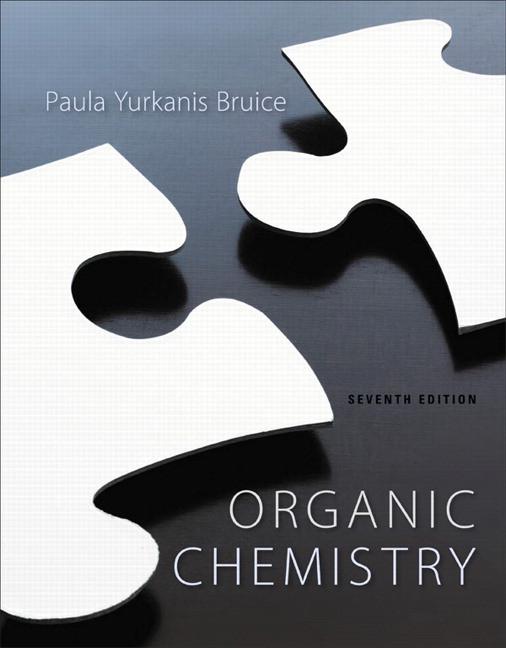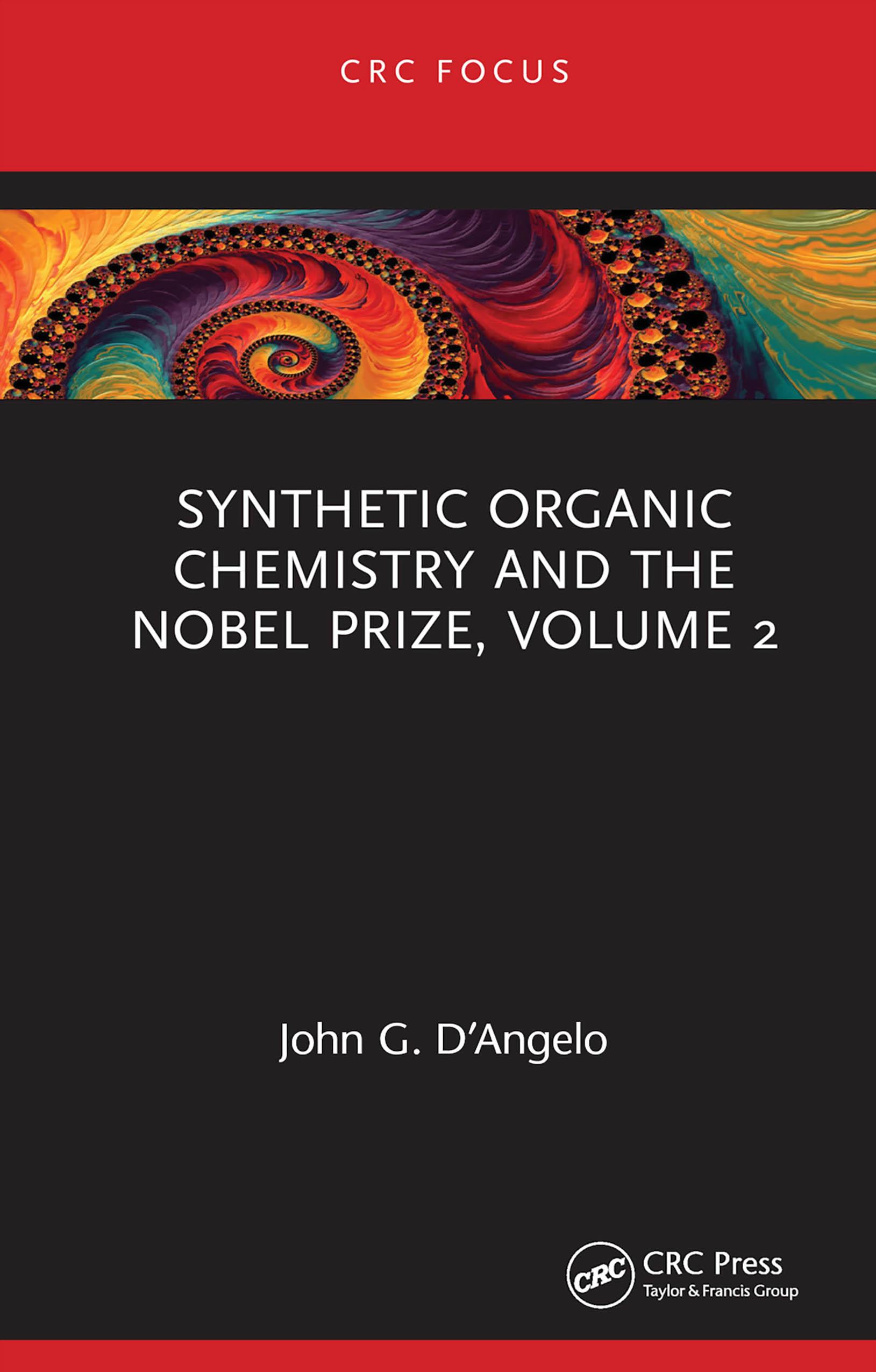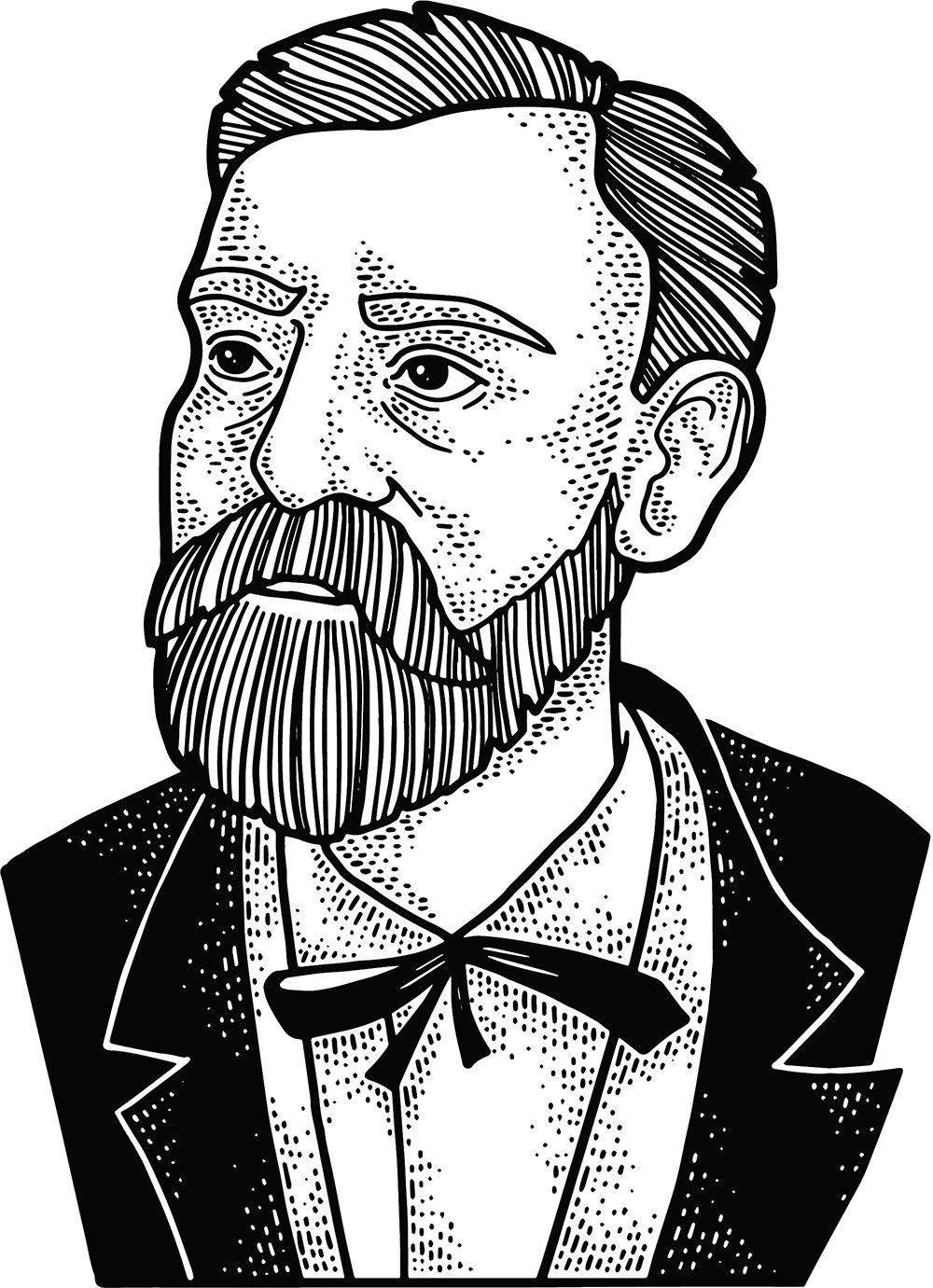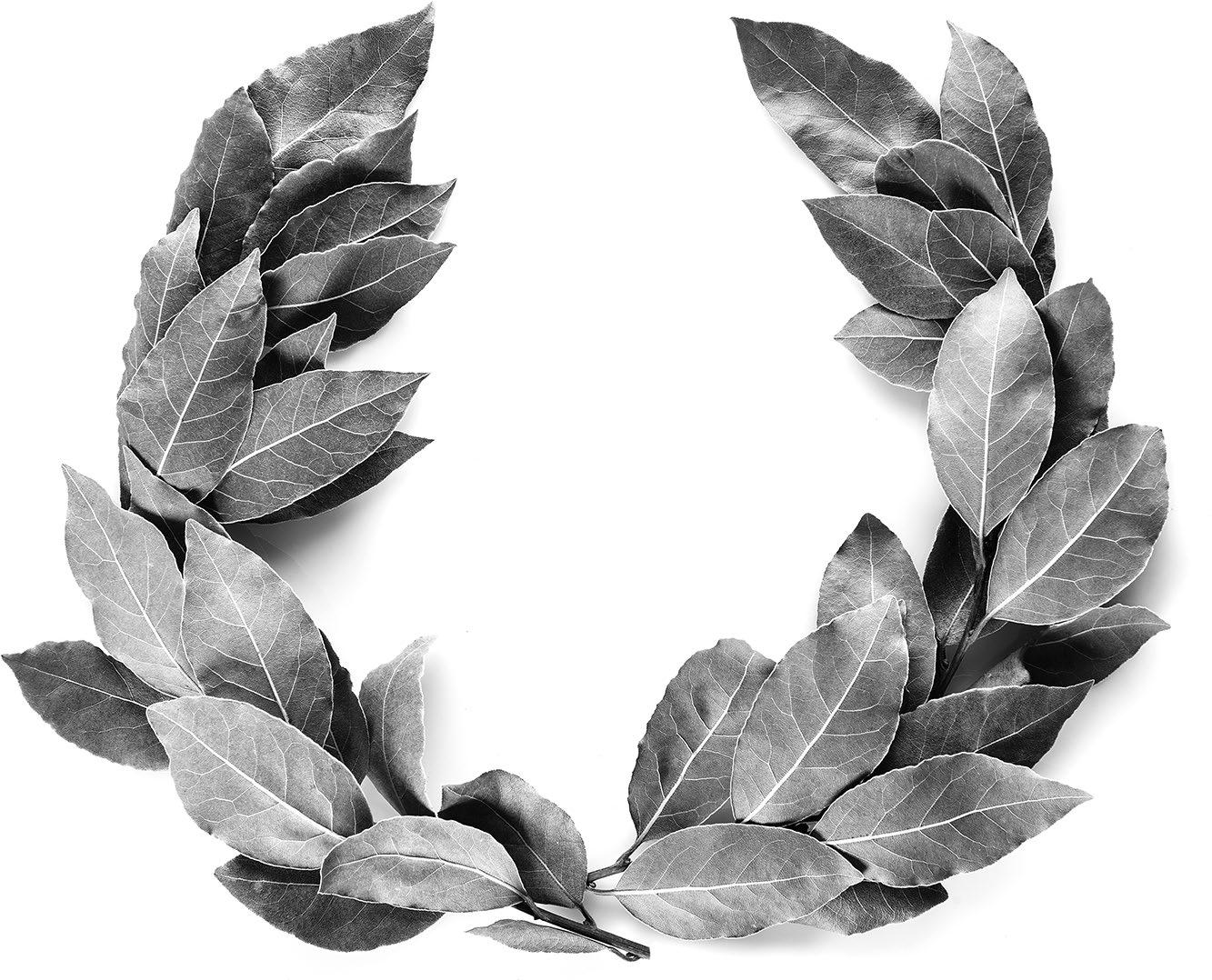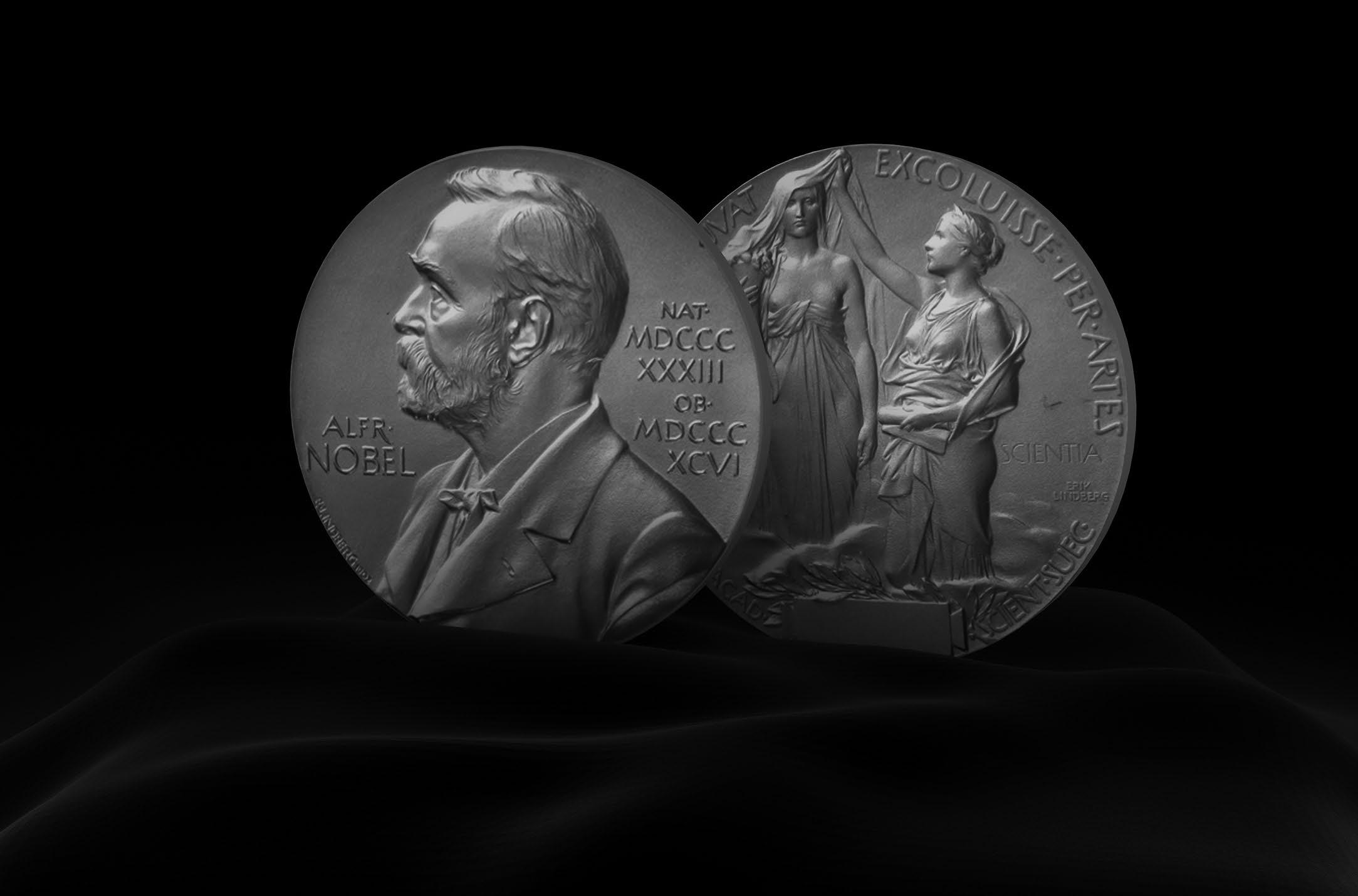1 Introduction
HISTORY
The Nobel Prize—a prize recognized at least in name—as one of, if not, THE premier reward for genius is arguably the most famous award in the world. It is unlikely that someone past a High School education has never heard of the Nobel Prize. Awarded (mostly) annually since 1901 in the subjects of Chemistry, Physics, Physiology or Medicine, Peace, and Literature and joined in 1968 by the Sveriges Riksbank Prize in Economic Sciences in the memory of Alfred Nobel, these prizes carry a medal, diploma, and cash prize for those chosen for this high honor in addition to the accompanying recognition. It is important to note that the Economic Sciences prize is formally speaking a not Nobel Prize, though they’re awarded at the same time, and this prize is treated very much like a Nobel (Figure 1.1).
FIGURE 1.1 Artist rendition of Alfred Nobel (Image #1704216421).
The prize was created by Alfred Nobel in 1895 in his last will and testament, with the largest share of his considerable fortune allocated to the series of prizes. The “rules” set out in Nobel’s will about the award are still at least mostly adhered to today, over a century later. The chief difference is that although Nobel stipulated that the award should be made for a scientific matter from the preceding year, it appears (to me anyway) that it has more recently become more of a lifetime achievement award of sorts, at least in the life and physical sciences awards (Chemistry, Physiology or Medicine, and Physics). Exactly when this started is difficult to pin down, but it is very clearly the current modus operandi.
The primary source of Nobel’s wealth was being the inventor of dynamite, a stabilized form of the explosive nitroglycerine. In a very real way, the establishment of the prize was its own first controversy. Initially, the creation of the prize caused somewhat of a scandal, and it wasn’t until several years (1901) after his death (1896) that his requests were finally fulfilled with the first series of awards. His own family opposed the prize; much of his considerable wealth had been bequeathed for its creation rather than to them so it is easy to understand their objection. In his will, he specifically called for the Swedish Academy of Sciences to award both the Physics and Chemistry awards; the Karolinska Institute in Stockholm to award the Physiology or Medicine award; the Peace prize to be awarded by a committee of five to be selected by the Norwegian Storting; and the literature award to be awarded by the Academy in Stockholm.
One may wonder why Alfred Nobel created the prize at all. Although there is no direct evidence to support the claims, legend has it that Alfred was horrified by an errant obituary—his own—mistakenly published upon the death of his brother. In it, Alfred was referred to as “the merchant of death,” due to how his invention, dynamite, had been used. In addition to less violent uses (e.g. mining), dynamite and other modern derivatives/analogs are also used as a weapon and Nobel’s time was no different. Being labeled a “merchant of death” is enough to rattle just about anyone’s emotional cage. The timing (1895) of his will (his third one) seems to fit this legend since the version of his last will and testament establishing the award was signed seven years after the death of his brother, rather than before his brother’s death while his wealth had come far earlier.
OTHER FACTS
The awards are traditionally announced over a one-week period in early October. The ceremony and lectures are held in Stockholm later in the year, usually in December. As of this writing, in mid-2022, since its inception the
Nobel Prize has been awarded to 947 individual Laureates and 28 organizations. Since great intellect and achievements often are not isolated accomplishments, four individuals have won more than one Nobel Prize and three organizations have done likewise. Furthermore, some Nobel greatness apparently “runs” in some families. Among these, the Curie family is by far the most successful though they are not alone in having more than one family member earn an award.
Although there are no rules limiting how many awards one recipient can win, no award can be given for more than two works (i.e., topics) in any given year and the award may only be shared, whether it is for one work or two, between three recipients among each of the awarded fields. In some cases, this sharing will happen by more than one topic earning the honor, other times, it will be due to more than one individual or organization contributing to the same work. In short, the following permutations are the only ones allowed.
• One topic, one person
• One topic two people
• One topic three people
• Topic A one person and Topic B one person
• Topic A one person and Topic B two people
Prior to 1974, posthumous awarding of the prize was permitted and happened twice. Dag Hammarskjöl (1961, Peace) and Erik Axel Karlfeldt (1931, Literature) were both posthumously awarded the Nobel Prize. Both died earlier in the year they were awarded their prize and likely were at the very least nominated prior to their deaths. Hammarskjöl, the second Secretary-General of the United Nations was given the award “for developing the UN into an effective and constructive international organization, capable of giving life to the principles and aims expressed in the UN Charter.” Hammarskjöl died in a plane crash in September 1961. Karlfeldt, meanwhile, was given the award for “the poetry of Erik Axel Karlfeldt” and died in April 1931. One exception since 1974 has been made for extenuating circumstances. The committee did not know that the awardee, Ralph Steinman (2011, Physiology or Medicine) had passed away a mere three days before announcing the award. Steinman was given the award “for his discovery of the dendritic cell and its role in adaptive immunity.”
The maximum number of recipients stipulated has become a modern source of controversy. Science, and in fact the world, is far more collaborative than it was in Nobel’s time. Rarely—effectively never—does a modern researcher make a major discovery alone. Instead, most modern work involves literal scores of individuals playing an important even if small role in creating the final mosaic. Thus, restricting the Nobel Prize to such a small number guarantees that people contributing to the work are left out. It is even
sa fe to say it leaves out most of the people contributing. That it is inevitably and arguably often the people doing the lion’s share of actual work only magn ifies the problem. This is a fair criticism of the prize. However, we must recognize that it is also fair to lay this claim against any award. Even if it is more noticeable because of the magnitude of this prize, all awards (including sports awards) that recognize an individual ignore the contributions of essential supporting role players. By no means am I trying to justify or defend this reality. I only wish to point out that all awards can be so criticized. This is covered in more detail, as are some potential resolutions, in the controversies section later in this introduction.
Nobel’s will also stipulates what should happen in years where no award is given for a field. The will states, the prize money is to be reserved for the following year and if even then, no award can be made, the funds are added to the Foundation’s restricted funds. This (no award for a field) has happened, between the awards, a total of 49 times, mostly during times of war. Technically, the statutes for skipping a year refer to it being possible to not make an award if “none of the works under consideration is found to be of the importance indicated in the first paragraph…” but that the award was consistently not awarded during times of global conflict is probably not a coincidence. It is unlikely that somehow, no important work was done during those years. Literature was skipped in 2018 amid controversy involving one of the committee members though in this case, it was awarded the next year, making delayed more accurate in this case than skipped. Peace is the one “skipped” the most at 19 times. The others do not even measure to half, in order: medicine—9; chemistry—8; literature—7; and physics—6. The award for economic sciences has not existed during any times of global conflict and has never been skipped.
(Perhaps) surprisingly, two Nobel Laureates declined the prize: JeanPaul Sartre (1964, Literature) on the grounds that he consistently declined all official honors, and Le Duc Tho (1973, Peace) along with U.S. Secretary of State (who accepted the award), Henry Kissinger. Although they were jointly awarded the prize for their work on the Vietnam Peace Accord, Tho pointed to the ongoing situation in Vietnam as justification for declining. Four others were forced to decline the award. Three of the four were Germans—Richard Kuhn (1938, Chemistry) “for his work on carotenoids and vitamins,” Adolf Butenandt (1939, Chemistry) “for his work on sex hormones,” and Gerhard Domagk (1939, Physiology or Medicine) “for the discovery of the antibacterial effects of prontosil”—forbidden from accepting the award by Hitler; all four later were able to receive the diploma and medal but not the prize. The fourth, Boris Pasternak, a Russian, (1958, Literature) “for his important achievement both in contemporary lyrical poetry and the field of the great
Russian epic tradition,” initially accepted his award but was later coerced by authorities to decline it.
There are also no restrictions regarding the awardee being a free person; three laureates were imprisoned at the time of the award. Carl von Ossietzky (1935, Peace), Aung San Suu Kyi (1991, Peace), and Liu Xiaobo (2010, Peace) were all awarded the Prize while incarcerated. von Ossietzky was given the award “for his burning love for freedom of thought and expression and his valuable contribution to the cause of peace” and was an anti-Nazi who revealed the rearmament efforts of Germany in violation of the Versailles Treaty that ended World War I. He was sent to a concentration camp when the Nazis seized power. Hitler’s fury in response to von Ossietzky’s award led him to prohibit all Germans from receiving the Nobel Prize. Kyi was awarded the prize “for her non-violent struggle for democracy and human rights.” She opposed the military junta that ruled Burma, efforts that landed her under house arrest for nearly 15 years. After being released, she resumed her political career only to be arrested again after a military coup and later sentenced to a total of 8 years. Finally, Liu Xiaobo, given the award “for his long and non-violent struggle for fundamental human rights in China,” received his sentence for the crime of speaking. His first stint in prison was due to his part in the student protests on Tiananmen Square in 1989 and a second (this time in a labor camp) for his criticism of China’s one-party system. Most recently, in 2008, Liu co-authored Charta 08, which advocates for China’s shift in the direction of democracy. His charge was undermining the state authorities, and this earned him an 11-year sentence.
Some Nobel Laureates were downright deplorable. Take for example Dr. D. Carleton Gajdusek (1976, Physiology or Medicine), a pediatrician who discovered the role of prions in a disease known as Kuru, which is related to mad cow disease. He was also a self-admitted, and I dare say unapologetic pedophile. Many of his victims were also his research patients. Another, Fritz Haber (1918, Chemistry) was potentially a war criminal. Both are covered in more detail in the controversies section of this introduction. Sometimes, Nobel greatness runs in the family. The Curie Family is the most prolific of the “Nobel Families.” Pierre Curie won the prize (1903, Physics), sharing it with his wife, Marie (a.k.a. Madame) Curie, who went on to win one of her own (1911, Chemistry) several years later. One of their daughters, Irène Joliot-Curie and her husband Frédèric Joliot also went on to share a Nobel Prize (1935, Chemistry). This brings their family total to five shared or individual Nobel Prizes. As if this were not enough, although not an actual awardee, Henry R. Labouisse, husband of another of Marie and Pierre’s daughters Ève, accepted the prize on behalf of UNICEF (1965,
Pe ace). All told, this one family had a hand in no less than six Nobel Prizes. It is extremely unlikely that something like this will ever be matched. It appears that the Curies are the New York Yankees of the Nobel Prize. The Curies, though the most prolific, do not hold an exclusive claim to multiple family members earning a Nobel Prize. Other spousal pairs to share a prize are: Carl and Gerty Cori (1947, Physiology or Medicine); Esther Duflo and Abhijit Banerjee (2019, Sveriges Riksbank Prize in Economic Sciences in Memory of Alfred Nobel); and May-Britt and Edvard I. Moser (2014, Physiology or Medicine) all shared a Nobel Prize while Gunnar Mydral (1974, Sveriges Riksbank Prize in Economic Sciences in Memory of Alfred Nobel) and his spouse Alva Mydral (1982, Peace) brought two separate Nobels to their house. Father and son pairs have also brought home Nobel Prizes with one pair: Sir William Henry and son William Lawrence Bragg (1915, Physics) sharing a prize. Other father-son pairs include Niels (1922, Physics) and Agae Bohr (1975, Physics); Hons von Euler-Chelpin (1929, Chemistry) and Ulf von Euler (1970, Physiology or Medicine); Arthur (1959, Physiology or Medicine) and Roger Kornberg (2006, Chemistry); Manne (1924, Physics) and Kai Siegbahn (1981, Physics); and J. J. (1906, Physics) and George Thomson (1937, Physics). Rounding out the keeping it in the family trend are Jan (1969 Sveriges Riksbank Prize in Economic Sciences in Memory of Alfred Nobel), and younger brother Nikolaas Tinbergen (1973, Physiology or Medicine).
How is the Nobel Prize selected?
Each prize has a selection committee that, around September of the preceding year, sends confidential forms to individuals considered qualified and competent to nominate. Committee members are all members of the academy and serve for a period of three years. Not just anyone can serve as an expert advisor, as well; only those specially appointed.
Across the awards, nominations are not allowed to be revealed until 50 years after the prize has been awarded. However, nominators are under no obligation to keep their nominations confidential. The qualified nominators and timeline (which does have some slight variations) for each award are summarized below.
The last point across all the awards effectively serves as an “out” of sorts to allow for solicitation from anyone in the field. Importantly, nobody can self-nominate. One would imagine (or hope) such hubris is unlikely to be received well by the committee, anyway. Likewise, at least for the chemistry prize, it is not possible for just anyone to submit a nomination; for example, you cannot nominate one of your pals.
TOPIC
“In recognition of the extraordinary services they have rendered by their joint researches on the radiation phenomena discovered by Professor Henri Becquerel”
FAMILYNAME(S)YEARFIELD
Piere and Marie Curie1903Physics
1911Chemistry“In recognition of her services to the advancement of chemistry by the discovery of the elements radium and polonium, by the isolation of radium and the study of the nature and compounds of this remarkable element”
1935Chemistry“In recognition of their synthesis of new radioactive elements”
1965Peace“For its effort to enhance solidarity between nations and reduce the difference between rich and poor states”
“For their discovery of the course of the catalytic conversion of glycogen”
“For their experimental approach to alleviating global poverty”
“For their discoveries of cells that constitute a positioning system in the brain”
“For their pioneering work in the theory of money and economic fluctuations and for their penetrating analysis of the interdependence of economic, social and institutional phenomena”
Marie Curie
Irène Joliot-Curie and Frédèric Joliot
Henry R. Labouisse (on behalf of UNICEF)
Curie
CoriCarl and Gerty Cori1947Physiology or Medicine
2019Economic Sciences
2014Physiology or Medicine
Esther Duflo and Abhijit Banerjee
Duflo and Banerjee
MoserMay-Britt and Edvard I. Moser
MydralGunner Mydral1974Economic Sciences
Alva Mydral
1915Physics“For their services in the analysis of crystal structure by means of X-rays”
1982Peace“For their work for disarmament and nuclear and weapon-free zones” BraggSir William and William Lawrence Bragg
( Continued )
(Continued)
TOPIC
FAMILYNAME(S)YEARFIELD
1922Physics“For his services in the investigation of the structure of atoms and of the radiation emanating from them” Agae
BohrNiels
1975Physics “For the discovery of the connection between collective motion and particle motion in atomic nuclei and the development of the theory of the structure of the atomic nucleus based on this connection”
1970Physiology or Medicine “For their discoveries concerning the humoral transmitters in the nerve terminals and the mechanism for their storage, release and inactivation”
1929Chemistry“For their investigations on the fermentation of sugar and fermentative enzymes” Ulf von Euler
Hons von Euler-Chelpin
Euler- Chelpin
KornbergArthur Kornberg1959Physiology or Medicine “For their discovery of the mechanisms in the biological synthesis of ribonucleic acid and deoxyribonucleic acid”
Roger Kornberg2006Chemistry“For his studies of the molecular basis of eukaryotic transcription”
SiegbahnManne Siegbahn1924Physics “For his discoveries and research in the field of X-ray spectroscopy”
1981Physics“For his contribution to the development of high-resolution electron spectroscopy”
Kai Siegbahn
ThomsonJ. J. Thomson1906Physics “In recognition of the great merits of his theoretical and experimental investigations on the conduction of electricity by gases”
George Thomson1937Physics“For their experimental discovery of the diffraction of electrons by crystals”
TinbergenJan Tinbergen1969Economic Sciences “For having developed and applied dynamic models for the analysis of economic processes”
Nikolaas Tinbergen1973Physiology or Medicine “For their discoveries concerning organization and elicitation of individual and social behavior patterns”
CHEMISTRY1
QUALIFIED NOMINATORS
Member of Royal Swedish Academy of Sciences
Member of the Nobel Committee for chemistry or physics
Nobel Laureate in chemistry or physics
Permanent professor in the sciences of chemistry at the universities and institutes of technology of Sweden, Denmark, Finland, Iceland, and Norway and Karolinska Instituet, Stockholm
Holders of corresponding Chairs in at least six universities or university colleges selected by the Academy of Sciences with a view to ensuring appropriate distribution of the different countries and their centers of learning
Other scientists from whom the academy may see fit to invite proposals.
PHYSICS2
QUALIFIED NOMINATORS
Swedish and foreign members of the Royal Swedish Academy of Sciences; Members of the Nobel Committee for Physics; Nobel Prize laureates in physics; Tenured professors in the Physical sciences at the universities and institutes of technology of Sweden, Denmark, Finland, Iceland and Norway, and Karolinska Instituet, Stockholm;
Holders of corresponding chairs in at least six universities or university colleges (normally, hundreds of universities) selected by the Academy of Sciences with a view to ensuring the appropriate distribution over the different countries and their seats of learning; and
Other scientists from whom the Academy may see fit to invite proposals.
Why Laureates?
TIMELINE
~September previous year: nomination invitations sent out.
January 31: deadline for nominations
March–June: consultation with experts
June–August: report writing with recommendations
September: academy receives the final report
October: majority vote and announcement
December: ceremony
TIMELINE
~September previous year: nomination invitations sent out.
January 31: deadline for nominations
March–June: consultation with experts
June–August: report writing with recommendations
September: Academy receives the final report
October: majority vote and announcement December: ceremony
The reference to Nobel Prize winners as laureates has its roots in ancient Greece. A laurel wreath, a circular crown made of branches and leaves of the bay laurel, was awarded to victors of athletic competitions and poetic meets
PHYSIOLOGY OR MEDICINE3
QUALIFIED NOMINATORS
Members of the Nobel Assembly at Karolinska Instituet, Stockholm; Swedish and foreign members of the Medicine and Biology classes of the Royal Swedish Academy of Sciences; Nobel Prize laureates in physiology or medicine and chemistry; Members of the Nobel Committee not qualified under paragraph 1 above; Holders of established posts as full professors at the faculties of medicine in Sweden and holders of similar posts at the faculties of medicine or similar institutions in Denmark, Finland, Iceland, and Norway; Holders of similar posts at no fewer than six other faculties of medicine at universities around the world, selected by the Nobel Assembly, with a view to ensuring the appropriate distribution of the task among various countries.
Scientists whom the Nobel Assembly may otherwise see fit to approach. No self-nominations are considered.
TIMELINE
~September previous year: nomination invitations sent out.
January 31: deadline for nominations
March–June: consultation with experts
June–August: report writing with recommendations
September: academy receives the final report
October: majority vote and announcement
December: ceremony
LITERATURE4
QUALIFIED NOMINATORS TIMELINE
Members of the Swedish Academy and of other academies, institutions, and societies which are similar to it in construction and purpose; Professors of literature and linguistics at universities and university colleges;
Previous Nobel Prize laureates in literature; Presidents of those societies of authors who are representative of the literary production in their respective countries.
~September previous year: nominations sent out
January 31: deadline for nominations
April: 15–20 preliminary candidates
May: five final candidates
June–August: reading of productions
September: academy members confer
October: award announced
December: ceremony
PEACE5
QUALIFIED NOMINATORS
Members of national assemblies and national governments (cabinet members/ministers) of sovereign states as well as current heads of states
Members of The International Court of Justice in The Hague and The Permanent Court of Arbitration in The Hague
Members of l’Institut de Droit International
Members of the international board of the Women’s International League for Peace and Freedom University professors, professors emeriti and associate professors of history, social sciences, law, philosophy, theology, and religion; university rectors and university directors (or their equivalents); directors of peace research institutes and foreign policy institutes
Persons who have been awarded the Nobel Peace Prize Members of the main board of directors or its equivalent of organizations that have been awarded the Nobel Peace Prize Current and former members of the Norwegian Nobel Committee (proposals by current members of the Committee to be submitted no later than at the first meeting of the Committee after 1 February)
Former advisers to the Norwegian Nobel Committee
ECONOMIC SCIENCES6
QUALIFIED NOMINATORS
Swedish and foreign members of the Royal Swedish Academy of Sciences;
Members of the Prize Committee for the Sveriges Riksbank Prize in Economic Sciences in Memory of Alfred Nobel;
Persons who have been awarded the Sveriges Riksbank Prize in Economic Sciences in Memory of Alfred Nobel; Permanent professors in relevant subjects at the universities and colleges in Sweden, Denmark, Finland, Iceland, and Norway;
Holders of corresponding chairs in at least six universities or colleges, selected for the relevant year by the Academy of Sciences with a view to ensuring the appropriate distribution between different countries and their seats of learning; and
Other scientists from whom the Academy may see fit to invite proposals.
TIMELINE
~September previous year: nomination invitations sent out.
January 31: deadline for nominations
February–April: preparation of short list
April–August: adviser review
October: majority vote and announcement December: ceremony
TIMELINE
~September previous year: nomination invitations sent out.
January 31: deadline for nominations
March–June: consultation with experts
June–August: report and recommendation writing
September: Academy receives report on finalists
October: majority vote and announcement
December: ceremony
in ancient Greece as a sign of honor. The term laureate to describe awardees of the Nobel Prize is used to harken back to this honor (Figure 1.2).
The medal, diploma, and cash prize
Created by Swedish and Norwegian artists and calligraphers each diploma is quite literally a work of art. The medals all have Nobel’s image on them with his birth and death years, though the economic sciences prize is slightly different in its design. Recall that this prize is in Nobel’s memory and was not one of the original subjects endowed by Nobel. Each medal is handmade out of 18-carat recycled gold. The cash award is currently set at nine mill ion Swedish Krona. As of this writing, this is equal to ~851,000 euros and ~965,000 USD (Figure 1.3).
Nobels proven wrong?
It is important to remember that science very routinely corrects itself. The mistakes that are corrected sometimes are because of misconduct, but other times, it is because technologies or other understandings improve, and we learn that the initial conclusions were wrong. It is very difficult to
FIGURE 1.2 Laurel Wreath (IMG # 448716724).
impossible to say which really happens more often, but I sense misconduct is less common. It should be no surprise that work that earned someone a Nobel Prize is not immune to this fate. To date, no Nobel Prizes have been awarded for work later found to be fraudulent. Two examples of disproven works are Johannes Fibiger (1926, Physiology or Medicine) and Enrico Fermi (1938, Physics). Fibiger was awarded the Nobel for the discovery of a parasitic cancer-causing worm. Although the worm without question is real, subsequent research proved there were no cancer-causing properties of this parasitic infection. Fibiger died (1928) before his work could be proven wrong.
Fermi, on the other hand, lived long enough to see his Nobel-winning work disproven and even agreed with the new (and correct) conclusions. Fermi had incorrectly concluded he generated new chemical elements during some of his nuclear chemistry work. He even went so far as to bestow names upon them. What Fermi had actually done, and Otto Hahn eventually figured out, was cause nuclear fission to occur. That this phenomenon was never documented before without question led to Fermi’s incorrect conclusion. It simply could not—at the time—have been the predicted outcome. Only later did additional work shed light on what was really happening.
FIGURE 1.3 Nobel Medal (IMG #1652139046).
Ot her award-winning works seem dubious, at best, with modern hindsight. Paul Hermann Müller (1948, Physiology or Medicine) was awarded the Nobel Prize for his discovery of the anti-insect properties of DDT, a substance that however effective at controlling mosquitos—and as a result malaria suppression—is now banned globally except in very exceptional circumstances. Its environmental impacts were later found to be severe enough that DDT is one of the central topics in Rachel Carson’s “Silent Spring,” a work credited with igniting the environmental movement. Carlson died relatively young at 57 (in 1964). Perhaps, she would have been a Nobel Laureate (for Peace) for her conservation work had she not. Finally, Antonio Egas Monic (1949, Physiology or Medicine) earned his award for developing the medical procedure lobotomy, a procedure rarely used today.
Controversies and snubs
Controversies
With honors such as the Nobel Prize, it should not be a surprise that there are occasional controversies, perceived snubs, or other general complaints and displeasure taken with both who is awarded the prize and maybe even more so who is not. There has even been some wondering whether or not the Nobel Prize is good for science at all.7 Although a complete treatment of these is not appropriate in this book series—it could likely be a book on its own—the interested reader is encouraged to perform a simple internet search for “Nobel Prize controversies.” While the issue is far more commonly centered around the work or one of the awardees, entirely unrelated to the work of a Nobel Prize, in 2018, the Nobel Prize for Literature was delayed until 2019 because of sexual harassment claims made against one of the board members. A brief discussion of some of the biggest work-based controversies is appropriate here.
There have been several Nobel Prizes that have been criticized in the sense that many believe the awardee should not have received the award. The Peace Prize seems particularly vulnerable to this. Former U.S. President Barak Obama (2009, Peace) is one of the most controversial. This is primarily because he was given the award a mere 9 months into his presidency. Nominations are collected months ahead of the actual award. This means that (then) President Obama, given the award “for his extraordinary efforts to strengthen international diplomacy and cooperation between peoples” was nominated incredibly early in his presidency; almost upon becoming the President. The notion that he, or frankly anyone, could have done enough to be worthy of this award is almost laughable.
Another controversial Peace Prize was given to Yasser Arafat, who shared the award with then-Israeli Prime Minister Yitzhak Rabin and Israeli Foreign Minister Shimon Peres (1994, Peace) because of their collective work on the Oslo Peace Accords. Not only were these Peace Accords unsuccessful at fostering peace—calling into question all three of the awards—Arafat was a key figure in many armed attacks in Israel; an awkward, at best, corollary.
Former U.S. Secretary of State Henry Kissinger’s award (1973, Peace) was also very controversial. Recall his Vietnamese counterpart Le Duc Tho refused to accept his share of the prize, citing that there was still conflict. There was also the bombing of Hanoi, ordered by Kissinger, during cease-fire negotiations but before the award was given.
Perhaps, the most scandalous of all is Fritz Haber (1918, Chemistry). Fritz Haber is the Haber of the Haber–Bosch process, a process still used largely unchanged today to make ammonia, essential to the commercial production of fertilizer; this is why he won the Nobel. Because of this process, hundreds
of m illions, if not billions of people are fed. This is not hyperbole. Modern food production is possible because of his work. Whatever environmentalists want to (perhaps rightly) say about how sustainable this is and what the ceiling is, it is currently true. Just a few years before winning the prize, however, he orchestrated the first massive and deliberate chemical weapons attack during war, using chlorine gas against the allied forces in France during World War I.
D. Carleton Gajdusek (1976 Physiology or Medicine) is radically different from Fritz Haber. While Haber’s crimes were done and well known before winning the prize, Gajdusek was not found to be a pedophile until years after his award. This means that Gajdusek’s award was given ignorant of his vile actions while Haber was awarded his Nobel with full knowledge of the atrocities he committed. By no means am I comparing the crimes and ranking their “terribleness.” There is, in my opinion, a stark difference between “holding your nose and making a decision” (Haber) and “later wincing at your decision” (Gajdusek) as disgusting information comes to light.
Nobel snubs
An extension of controversies is snubbing deserving winners. Before that, however, there are a number of giants of chemistry and science that could not have possibly been considered for the Nobel Prize, despite making contributions virtually unmatched in their importance. These pillars of chemistry, like those who solved the gas laws (Boyle, Charles, Gay-Lussac), Avogadro, and Lavoisier all predated Alfred Nobel’s founding of the Prize. In fact, some predated Nobel himself. Lavoisier is arguably the most impactful among them. In addition to demonstrating the importance of oxygen to combustion—helping to finally vanquish phlogiston—Lavoisier’s law of conservation of mass is perhaps the single most important contribution to chemistry ever. Thereafter, chemistry was a quantitative, rather than qualitative endeavor. It became a science according to more modern interpretations of science. Unfortunately for chemistry and especially Lavoisier, he was executed by guillotine at 50 during the French Revolution. In the broader science sense, Charles Darwin died (much less violently than Lavoisier) in 1882, well before the creation of the Nobel Prize, rendering him ineligible. It should also be further noted that Darwin’s work does not exactly fit into any of the areas recognized by the Nobel Prize. Physiology or Medicine is the closest match and would be quite the stretch. Such early scientists notwithstanding, it should come as no surprise—go ahead and be disappointed though—that the selection of the winner of the Nobel Prize is subject to the flaws of human behavior. By this, I mean that inevitably, biases, discrimination, and personal conflict have at least appeared to play a role in denying some otherwise worthy work being overlooked.
Even divorced from various biases, every year, it can be argued that “someone else” should have won the Nobel Prize, and this is probably true in every field, not just chemistry. In fact, this is the case for just about every award given across a very wide spectrum of recognition. Although sometimes the overlooked scientist eventually wins, the history of the Nobel Prize is littered with persons that it can be fairly asked “How did they never win?” Chemistry is not without such controversies. Also, multiple women have been snubbed a Nobel Prize in various fields. These snubs are covered in the appropriate section of this introduction. Some examples of snubs include the following:
Gilbert Lewis could have been awarded the Nobel Prize in Chemistry for more than one important discovery. Perhaps, his most noteworthy was the nature of a bond being the sharing of an electron pair. Lewis was nominated for the prize many times but was never awarded one. Reasons for him not winning one are difficult to prove, but there is some evidence that personal conflicts or less than fully informed opinions on the part of some evaluators played a significant role.
Dimitri Mendeleev, the father of the periodic table, was also never awarded a Nobel Prize in Chemistry. He allegedly came close, but the academy overseeing the award overruled the initial vote and changed the committee, subsequently holding a new vote that Mendeleev lost. Allegedly, this may have been at the behest of a rival (who at the time was a member of the Swedish Academy) of Mendeleev.
Henry Louis Le Châtelier was nominated for the prize but never awarded one despite his tremendously impactful contributions to chemical equilibria. It is possible that Le Châtelier’s snub is a product of the historical fact that his most important work on equilibria was done too early (before the Nobel Prize was created), causing him to be overlooked because of the clause of “the previous year.”
Chemistry and the sciences are not alone. Mahatma Gandhi, nominated five times for the Nobel Peace Prize, never won. Stephen Hawking, one of the most brilliant minds of our age was also never awarded a Nobel Prize for his work nor was Carl Sagan. This may have some root in that Hawking’s work could not be tested with contemporary tools, but maybe not.
WOMEN AND THE NOBEL
Over the years, across all the disciplines, the prize has been awarded to a woman 58 times, with one, Marie Curie, winning a total of two, in different fields (Physics with her husband Pierre in 1903 and Chemistry, alone, in
1911). The physics prize has been awarded to women four times (2020, 2018, 1963, and 1903), chemistry seven times (2020 [two winners] 2018, 2009, 1964, 1935, and 1911), physiology or medicine 12 times (2015, 2014, 2009 [two winners], 2008, 2004, 1995, 1998, 1986, 1983, 1977, and 1947), literature 16 times (2020, 2018, 2015, 2013, 2009, 2007, 2004, 1996, 1993, 1991, 1966, 1945, 1938, 1928, 1926, and 1906), peace, which leads the way with 18 times (2021, 2018, 2014, 2011 [three winners], 2004, 2003, 1997, 1992, 1991, 1982, 1979, 1976, 1946, 1931, and 1905) and the economic sciences prize has been awarded to a woman twice (2019 and 2009).
PHYSIOLOGY
AWARD CHEMISTRY
Total18822421910711889
To date, all Nobel Laureates have either outwardly presented as male or female. Even a casual perusal of the data should make clear that there is a wild imbalance with respect to the gender of the Nobel Prize winners. Currently, there has never been a winner who has announced being trans, and none of them transitioned later in their lives after being awarded a Nobel Prize.
Though earlier on, the dearth of women recipients in especially the science fields could be explained away by a smaller number of women in the fields, compared with men, modern women win rates are nowhere near the averages reported by employers and (anecdotally, at least) observed by anyone paying attention to the world. It is difficult to pin down a plausible, data or merit-based reason for this. Consequently, minds are left to wonder and inevitably wander to concluding discrimination and unfair judging. Although I want to say this is unjustified, I have no evidence to back up my stance. This is especially true for the awards with a more closed nomination process. Until and unless there is better accountability (perhaps through more transparent nominations) or systematic data-based rubrics that generate nominations or awards, this pall is likely to hang over the prizes.
Commentary on the dearth of women person of color laureates, especially in the sciences has been intensifying.8 Although a shortage of nominees, at least for women has been cited,9 concrete reasons for this lacking are far from agreed upon, a shortage of women in the fields is demonstrably false given that employment data indicate that the percentage of women working in
the fields is higher than the percentage of women taking home Nobel Prizes. Even considering the unofficial transition to more of a lifetime achievement award, rather than the greatest achievement of the last year award does not hold water; women have been working in the sciences for decades. A list10 has been compiled of deserving women chemists who arguably have been snubbed a Nobel Prize.
It would be quite easy to author an entire volume on a list of snubbed female Nobel-worthy scientists. The hardest part about such a list is determining when to stop. A short and nowhere near exhaustive list is:
Liese Meitner was one of the central contributors to nuclear fission, correcting Fermi’s work along with Otto Hahn. Despite being a long-time collaborator of Hahn’s, including on his award-winning work, Meitner did not share his award (1944, Chemistry). It is exceedingly difficult for anyone to justifiably rationalize this oversight even if some of her work was hampered as she fled for her life (Meitner was Jewish) to Sweden with the rise of the Nazis to power.
Rosalind Franklin (one of the most infamous snubs) could fairly consider to actually be not snubbed in the sense that the award was given for the work she contributed after her death. No sane and rational person can claim the committee waited for Franklin to die before recognizing the work. Nevertheless, it is impossible to ignore the fact that not one, not two, but three men were given the award related to her work. Part of what further enhances the ire of many is that particularly Watson and Crick collected little to no experimental results of their own regarding solving the structure of DNA, using especially Franklin’s data on the way to do so. I for one believe—with admittedly no evidence—that she would have been awarded the prize had she not died. I see it happening in two different ways. First, Franklin could have been awarded the prize instead of Wilkins. This in my opinion is the most likely course as her data was viewed to be of higher quality than his. A second option would have been to make two different awards whereby Watson and Crick would be given one (likely Physiology or Medicine, though perhaps, Chemistry), and the other pair would be given the Physics or Chemistry prize. Eleanor Roosevelt was an ardent advocate for Civil Rights and was never awarded the Peace Prize for her brave and noble work. Other Civil Rights activists (e.g., Rev. Dr. Martin Luther King, Jr.) were awarded the prize, so a claim that Civil Rights advocacy is insufficient to earn the award is weak, at best.
Joselyn Bell Burnell who performed the work that led to the discovery of pulsars sat by and watched while her colleagues won the Nobel Prize (1974, Physics). At the time, Burnell was a postdoctoral research student, further highlighting the disparity in credit between the Principal Investigators (PI) and those who work under their tutelage or mentoring.
Rachel Carlson’s work is a cornerstone in the environmental movement. Had she not passed away in 1964, she likely would have been awarded a Novel Prize in Peace for her impact on the environmental movement. Instead, it wasn’t until 43 years later that All Gore and the UN’s Intergovernmental Panel on Climate Change were awarded the Nobel Prize for Peace for their work on increasing awareness regarding climate change.
Race and the Nobel Prize
The lack of racial diversity, particularly as it is measured by skin color, is as shocking as it is disappointing. Consider the table herein that summarizes the data.
Total prizes 18822421910711889
# Caucasian winners1732141958010286
% Caucasian 929689758697
# Birth countries 383835474919
# Affiliated countries202421443510
In most of the prizes, the numbers of non-Caucasian awardees are approximately the same level as women. Here, however, it may be easier to rationalize, but I want to fall well short of justifying it. This rationalization comes from the reality that at least in the cases of the research-based awards, the vast majority—in fact nearly all the winners—are affiliated with institutions within affluent countries that have sometimes invested billions of dollars in basic research annually. This higher level of funding inevitably leads to higher profile and higher quality—or at least higher sophistication—research. This is not to say that non-Caucasian researchers are, for certain, never overlooked. Once again, it appears inevitable that a black or brown person will be working at a high-profile and well-funded institution with vibrant research support. I even know more than a few such persons. As with women, there once again appears to be room to conclude only discrimination can produce this reality. It is likely that an entire book can be written about the issue of general equality (be it gender, racial, or any other kind) in not just the Nobel Prizes
but all manner of awards. One take that I heartily disagree with is the claim that it is a reflection of racism in the American education system.11 Although the American education system is certainly rife with inequality that has many diverse roots, to claim that the American education system is at fault for a lack of diversity in a decidedly international award is absolutely off base. This may be part of why there is a dearth of racially diverse U.S.-based Nobel winners, it cannot possibly explain the issue on a global level. In fact, isolating the explanation to the education system in any country is potentially more counterproductive than it is helpful.
Outlined here is a breakdown of the country of origin and affiliation for all winners of each Nobel Prize category.
The chemistry award is spread over 18 individual affiliation countries and twice was awarded to someone who had a professional affiliation with an institution in two different countries. By more than a factor of two, the United States leads the way with a whopping 82 winners. The chemistry award by birth country is a bit more diverse, covering 38 different countries of origin for the awardee. Again, the United States is the leader by a very wide margin. The dominance of the United States in the Chemistry Prize (and other awards) begins shortly after World War II. Prior to that, western Europe was the leader. A similar observation can be made (at least with respect to the rise of the dominance by the United States) in other fields as well.
The Physiology or Medicine award has been awarded to individuals affiliated with 24 different countries, hailing from 38 different countries. Once again, the United States dominates the field. As was seen with the birth countries of some of the Chemistry Laureates, here we see countries that are no longer on the map. We also see how countries are referred to (e.g., Russian Empire vs. Russia and elsewhere USSR) changing. This is deliberately done to try to provide the best possible historical context of the number of awards. How countries were known during the award gives readers insight into the timeline and geopolitical climate of the respective eras.
The physics award has been awarded to individuals affiliated with 19 different countries with two awards being given to someone with multiple affiliations. As was the case in both the Chemistry and Physiology or Medicine awards, the number of birth countries ticks higher at 34. This is at least in part due to the ceasing to exist for some of these countries. Another part, however, is that people—including research scientists—relocate to other countries. In fact, after World War II, the United States “imported” (some may use the word poached) many topflight physicists from former enemy countries such as Germany.
Peace, the prize with the greatest diversity of all kinds, is one of the two award areas where the United States does not dominate. Part of why is that the leader is not any one individual but an organization. I have
